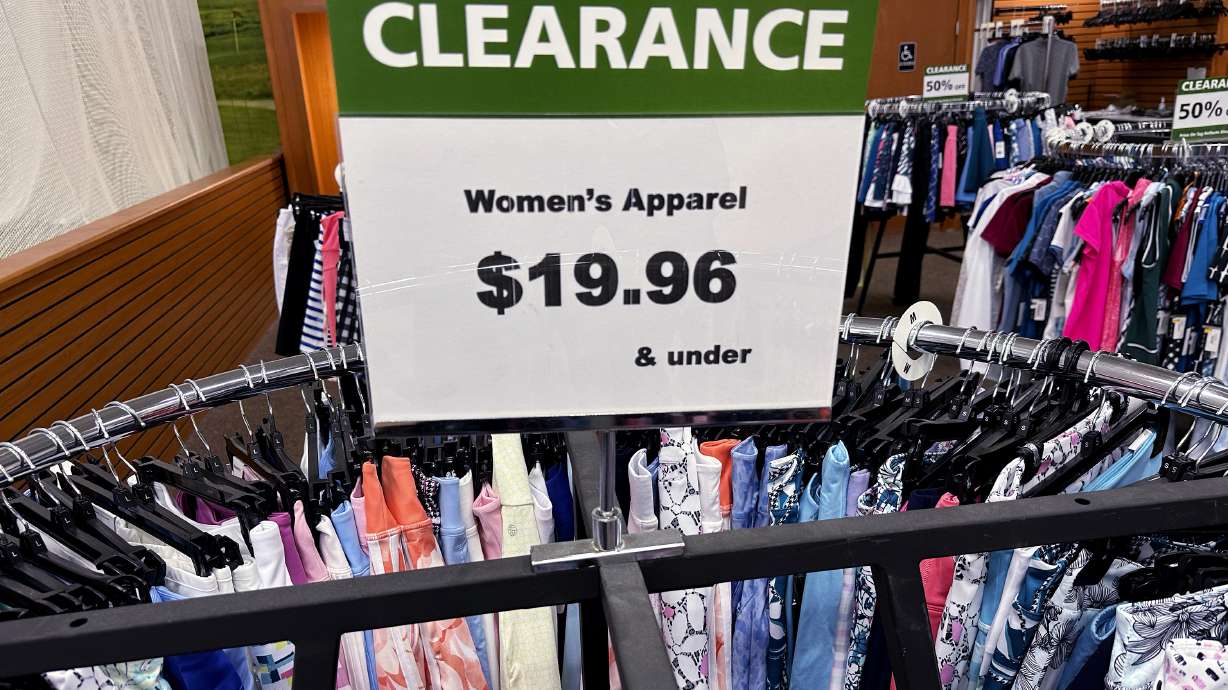Estimated read time: 3-4 minutes
This archived news story is available only for your personal, non-commercial use. Information in the story may be outdated or superseded by additional information. Reading or replaying the story in its archived form does not constitute a republication of the story.
WASHINGTON — A measure of inflation closely tracked by the Federal Reserve remained uncomfortably high in March, likely reinforcing the Fed's reluctance to cut interest rates anytime soon and underscoring a burden for President Joe Biden's reelection bid.
Friday's report from the government showed that prices rose 0.3% from February to March, the same as in the previous month. It was the third straight month that the index has run at a pace faster than is consistent with the Fed's 2% inflation target. Measured from a year earlier, prices were up 2.7% in March, up from a 2.5% annual rise in February.
After peaking at 7.1% in 2022, the Fed's favored inflation index steadily cooled for most of 2023. Yet, so far this year, the index has remained stuck above the central bank's target rate. More expensive gas and higher prices for restaurant meals, health care, auto repairs and insurance, among other items, have kept the overall pace of price increases elevated. With new car prices up sharply in the past few years, auto repair and replacement costs have risen especially fast.
Friday's inflation data showed that excluding volatile food and energy costs, "core" prices rose by an elevated 0.3% from February to March, unchanged from the previous month. Compared with a year earlier, core prices rose 2.8% for a second straight month. The Fed closely tracks core prices, which tend to provide a particularly good read of where inflation is headed.
The chronically elevated measures of inflation have become a source of frustration for the Fed, whose policymakers had projected as recently as last month that they expected to cut their benchmark rate three times this year. Most economists expected the cuts to begin in June. More recently, though, several Fed officials, including Chair Jerome Powell, have signaled that they have no immediate plans to cut their key rate, a move that would eventually lead to lower rates for mortgages, auto loans, credit cards and many business loans.
"Recent data have clearly not given us greater confidence" that inflation is coming fully under control, Powell said last week, and "instead indicate that it's likely to take longer than expected to achieve that confidence."
"If higher inflation does persist," he added, "we can maintain the current level of (interest rates) for as long as needed."
Many economists say they think the Fed may end up cutting its key rate only once or twice this year, perhaps beginning in September. Others say they think the central bank may not cut its benchmark rate at all in 2024.
Despite the continuing inflation pressures, robust growth in jobs and average wages has allowed many American consumers to continue spending at a healthy clip, supporting a still-durable economy. That helps explain why Fed officials have said they can afford to keep borrowing rates where they are for now. The economy did slow in the first three months of the year, the government reported Thursday, but consumers continued to fuel growth with their steady spending.
Beginning in March 2022, the Fed raised its benchmark rate 11 times to attack the worst bout of inflation in 40 years. Those rate hikes helped cool inflation drastically — until the decline stalled out at the start of this year.
The still-elevated price levels pose a challenge for the Biden administration, which has sought to claim credit for inflation's decline. The White House points to an unemployment rate that has remained below 4% for more than two years, the longest such stretch since the 1960s.
But prices for food, rent, gas and other necessities are still roughly 20% to 30% higher than they were four years ago, which has soured many Americans on the economy. Though average pay has also risen since then, many Americans feel they earned their larger paychecks, only to have the higher prices undercut those gains.








